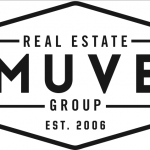GIVE YOUR KIDS A CHANCE
Have you wondered if there was a different way to prepare for retirement, a child’s tuition, or grandchildren’s tuition? Buying a rental property is hands down one of the best ways to make your money work for you. I’m personally a strong advocate of someone having “skin in the game”. So if my kids decide to go to college they will help pay for some of their tuition, but the properties being purchased now will help set them up for success later.
Owning a rental property is a great way to throw your savings into rocket speed and save enough money for any of your future financial plans or goals. The example below is specifically saving for tuition, but the principles can be applied to many different avenues.
I am preaching what I practice. If you would like to sit down on how to fund and find a rental property or prep your savings give me call!

FACT 1- “The Haves And The Have-Nots”
The gap between the rich and poor is growing rapidly across the United States. The richest 20% of U.S. households receive a greater share of national income than the middle three fifths combined. The bottom 40% are worse off in inflation-adjusted terms than similarly situated people two decades earlier. (Source:
U.S. Department of Labor)
FACT 2- “A College Education Is The Difference”
Earnings of full-time workers who have a college degree continue to accelerate faster than those with just a high school diploma. The average college graduate earns 89% more a year on average than a worker with only a high school diploma. Each year of formal schooling after high school adds 5% to 15% to annual earnings later in life. (Source: U.S. Department of Labor)
FACT 3- “College Costs are High and Rising”
Today, the minimum per year cost for a student attending a 4-year, in-state university is about $20,000 per year. This cost includes in-state tuition, books, and room and board. It now takes an average of s years to graduate. Only about 40% graduate in 4 years. Here are the minimum costs of a college education based on s years to graduate and college costs rising at 5% per year.

FACT 4- “You Have Four Choices”
1. Pay college costs out of ordinary income. Add 25% to 30% to cost for taxes.
2. Student works to pay part of costs. This could take longer to graduate with the higher possibility that the student will dropout.
3. Student loans. College graduate starts out in life deeply in debt.
4. Pay college costs out of assets. Buy a rental property that will be free and clear.
The easiest way to pay for a college education is to buy a rental property when your child is young, and put the property on a 15 year loan. Here’s the equity created in a $200,000 rental property with a 20% down payment and a 15 year amortized loan at 5.0%:

SEE PDF VERSION >
Original Source: Ninja Installation.
Copyright@ Larry Kendall, Ninja LLC 1994-2017
[contact-form to=’Jake@TheMuveGroup.com’ subject=’614 E ‘][contact-field label=’Name’ type=’name’ required=’1’/][contact-field label=’Email’ type=’email’ required=’1’/][contact-field label=’Phone’ type=’text’ required=’1’/][/contact-form]





